5 tips for managing livestock and grazing in drier weather
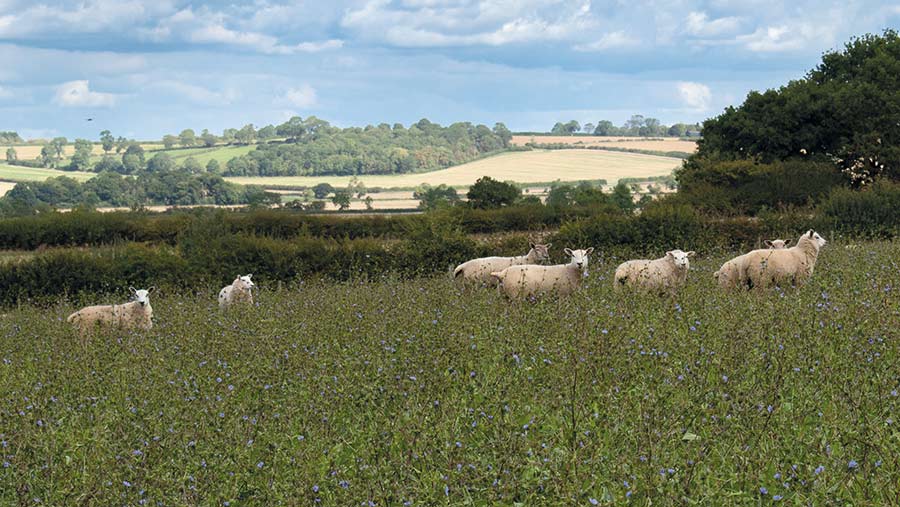 © MAG/Charlotte Cunningham
© MAG/Charlotte Cunningham Droughts are predicted to become more frequent occurrences, presenting an issue for livestock farmers who rely on grazing in the summer.
Without intervention, this could result in poor growth and body condition, as well as costly bills for bought-in feed.
Below, independent beef and sheep consultant Liz Genever gives her top tips for managing both stock and grazing to limit the impact of drier weather.
See also: How Cheshire suckler farm adapted to survive drought
1. Carry out a ‘stocktake’
Reducing livestock numbers can ease the pressure on grazing if it is already in short supply.
This means getting rid of any “passengers”, such as cull cows, or moving animals off farm as soon as possible.
2. Make a feed plan
This can be done three to four months ahead of time to predict likely grass coverage and plan accordingly.
The three key pieces of information needed to generate this plan are the number of animals on farm, grass growth predictions, based on previous performance and weather to date, and if/what supplements are being fed.
There is a tool on the AHDB website to help growers calculate this and the forecast can be used to adapt management decisions ahead of time.
3. Measure grass availability regularly and allocate accordingly
Even though a feed plan will offer useful predictions on pasture cover availability, it is still important to measure grass cover and assess the plan in real time.
This means walking fields regularly and using a plate meter or sward stick to measure the height of grass within a field.
Grazing and resting paddocks at the right time will aid better grass utilisation and sward recovery.
This year has been a good example of why this is so important, says Ms Genever, who worked with some clients every two weeks to assess and adapt their plans, depending on grass availability.
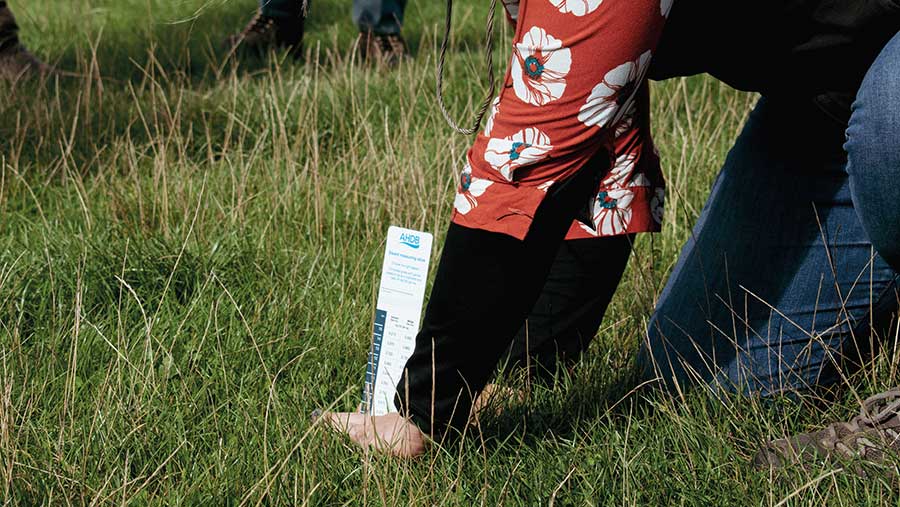
© MAG/Charlotte Cunningham
This might mean moving sheep off farm, or bringing them back on if the outlook changes, or adapting how pastures are rotated.
It may also be worth investigating locally if there is any feed available to purchase or to graze, such as cover crops, she says.
4. Consider other grazing options
Ryegrass-dominated leys are known for fast growth, however, in the absence of rain, they are the first to shut down.
Herbal leys often include more drought-tolerant species, which can provide a useful alternative grazing option in times when grass stops growing.
The best individual species to include in mixes will be farm dependent, but chicory is a very tolerant, resilient species.
Plantain also helps build drought resilience, and legumes are beneficial from a nitrogen-fixing perspective, which can help keep swards growing in drier conditions.
Getting establishment right is fundamental in the success of these leys and Ms Genever says they should just be “scratched” into the soil – rather than drilled deeply.
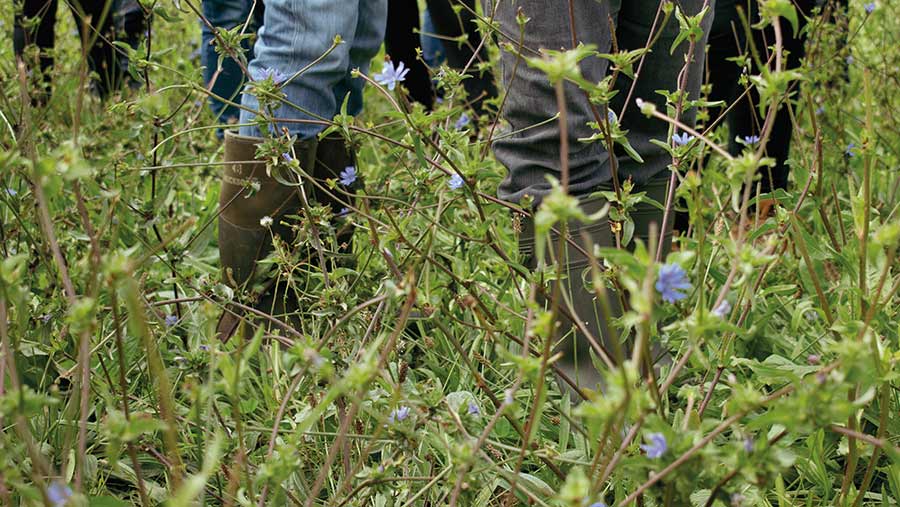
Herbal leys © MAG/Charlotte Cunningham
How herbal leys are grazed also affects sward longevity and management can be a challenge. Herbal leys often require a different mindset when it comes to grazing.
For example, a minimum 40-day rest period is recommended between rotations. This compares with a 15-day rest period during peak ryegrass growth.
5. Don’t overlook the important of soil nutrient status
When rain does come, soil nutrient status can greatly affect how well grass grows – particularly phosphorus (P). Soil tests will help identify if there are any deficits in pH, P, potassium and magnesium.
Correcting these ahead of a new season, with a lime or nutrient application, will help to improve growth.
Herbal mixes – particularly legumes – have a high requirement for P and sulphur, so it is important to think about how to feed this to sustain the sward.
Liz Genever was speaking at a recent AHDB event hosted by Chestnut Farm, Lincolnshire
Case study: Chris and Louise Elkington, Lincolnshire
At Chestnut Farm, near Grantham, sheep farmers Chris and Louise Elkington are putting measures in place to protect them from the risk of further droughts.
The farm is home to 450 ewes that are reared on 125ha (309 acres) of permanent pasture and temporary, short-term forage lets, which are rotationally grazed.
The ewes are split into two flocks – one lambing indoors in February, and the second outdoors in April.
This is to facilitate a steady flow of lambs for the pair’s butchery business, Gelston Lamb, which was set up in 2014 to allow them to sell direct to consumer.
Their goal is to rear and finish everything on grass. But already situated in a drier part of the county – typically averaging 610mm of rainfall a year – the additional pressure of the drought this season has made achieving this goal a real challenge, says Mr Elkington, an AHDB strategic farmer.
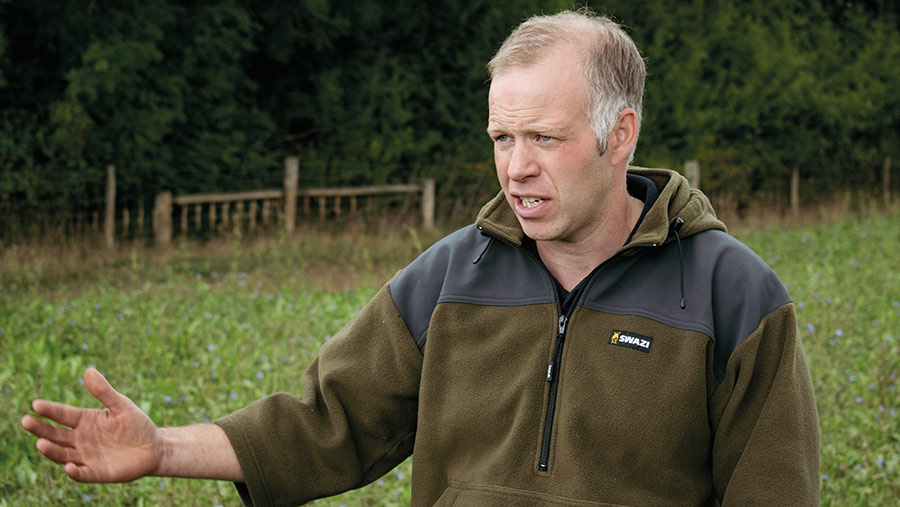
Chris Elkington © MAG/Charlotte Cunningham
“With it being quite a dry spring, we didn’t have the growth we wanted to start with, and [grass growth] struggled all year.
“We weaned early and took the decision to put ewes into sacrifice fields and feed them silage.
“They were where we wanted them with body condition score, and we felt we couldn’t afford to let them go backwards.”
With the lambs needed for the butchery, selling stock to reduce pressure on grazing is not a viable option. Instead, Mr Elkington is exploring alternative grazing options to grass.
This has included herbal leys and establishing an area as a GS4 legume- and herb-rich sward, as part of the Countryside Stewardship scheme.
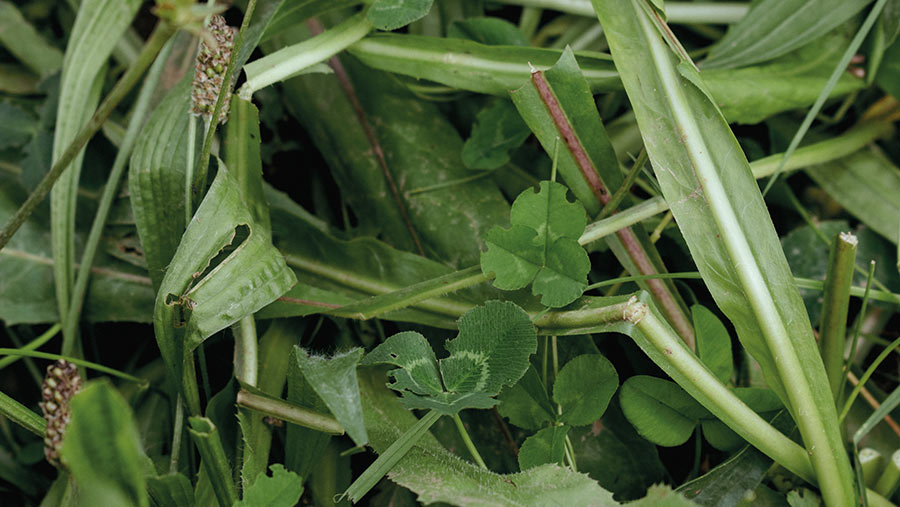
Plantain © MAG/Charlotte Cunningham
The mixture he has planted comprises 16 species: late and intermediate perennial ryegrass, red clover, sainfoin, timothy, meadow fescue, tall fescue, burnet, chicory, plantain, alsike clover, cocksfoot, bird’s-foot trefoil, sheep’s parsley, sweet yellow blossom clover and yarrow.
Mr Elkington says these species – particularly chicory – are more resilient in times of drought, allowing him to keep grazing sheep for longer.
There is also the additional benefit of the GS4 payment. The current value of this is £358/ha (£145/acre).
“The hope is that this will provide us some green cover in those months where we have minimal rainfall.
“They [the herbal leys] will be split up and rotationally grazed to give them enough of a rest period, but we’re hoping this will tick the boxes of keeping something for stock to eat through the dry times.”
